18 Delicious Desserts You Can Only Get Abroad
Some of the world’s most tempting desserts can only be found in the places where they were first made. These treats are often tied to local traditions, special ingredients, and regional cooking styles. From creamy custard tarts in Portugal to sticky rice sweets in Thailand, each one offers something different. They are not just tasty, they reflect the culture around them. Many of these desserts are hard to find outside their home countries. Even if you try making them at home, the original versions usually taste better. If you love sweets and travel, these are worth seeking out.
This post may contain affiliate links, which helps keep this content free. Please read our disclosure for more info.
Pastel de Nata (Portugal)
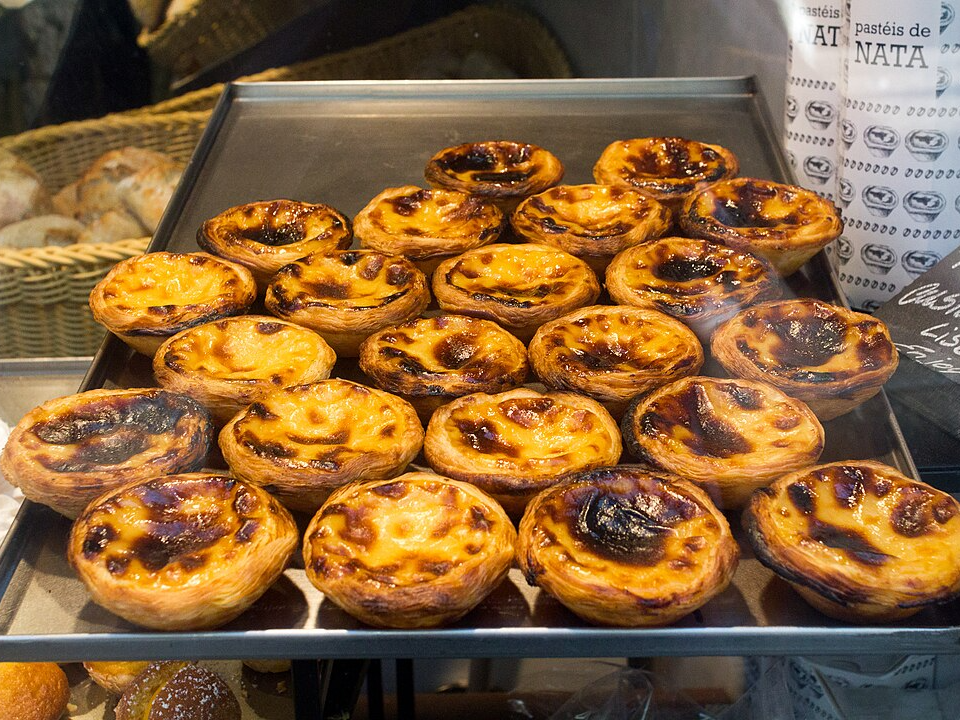
This Portuguese custard tart has a flaky outer shell and a creamy center that is lightly caramelized on top. Found in Lisbon’s pastry shops and cafés, it is a favorite among locals who enjoy it with a shot of espresso. The filling is made from egg yolks, sugar, and cream, giving it a rich yet light texture that balances well with the crisp crust. It is usually served warm and dusted with a pinch of cinnamon.
The original version is closely linked to the Jerónimos Monastery in Belém, where monks are said to have created the recipe hundreds of years ago. While imitations exist around the world, the flavor and texture of an authentic pastel de nata are tied to the ingredients and technique passed down through generations. One tart often leads to another, as they are made to be eaten fresh. No visit to Portugal feels complete without trying one.
Kakigōri (Japan)
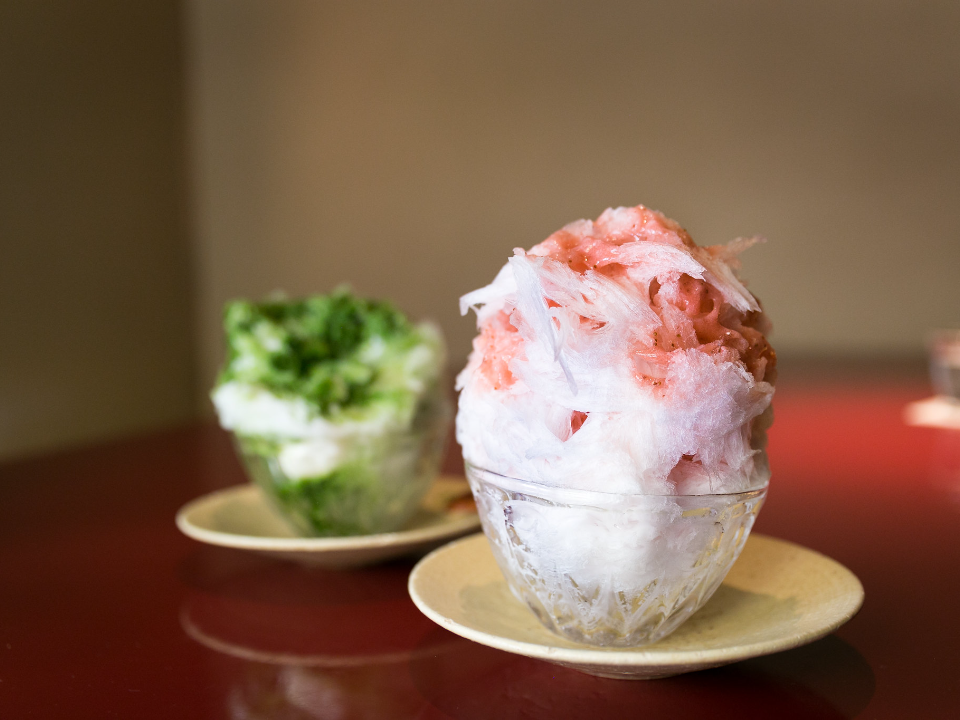
This Japanese shaved ice dessert is more than a treat to beat the heat. It is known for its soft, snow-like texture and wide range of toppings. Flavors include matcha, strawberry, melon, and even sweet red bean paste. The syrup seeps into the ice, making each bite cold, flavorful, and refreshing without being too sweet.
Shops around Japan take pride in perfecting their own version using special ice blocks and handmade syrups. Some even offer seasonal varieties with ingredients like yuzu or sakura. While similar to snow cones, kakigōri stands out for its texture and the quality of its ingredients. It is a popular choice during summer festivals but can be found in dessert cafés all year round.
Turrón de Jijona (Spain)

Turrón de Jijona is a soft, chewy almond nougat that originates from the town of Jijona in Spain. It is made with ground almonds, honey, and egg whites, creating a dense yet smooth texture. Traditionally eaten during the Christmas season, it has become a symbol of Spanish holiday celebrations. Its sweetness is rich, and the almond flavor is deep and satisfying.
The recipe has remained largely unchanged for centuries, and many Spanish families have their favorite brand or shop. Unlike the harder varieties of nougat found elsewhere, this version almost melts in the mouth. It pairs well with coffee or a small glass of dessert wine. You will find it stocked in markets and bakeries across Spain, but the freshest and most flavorful ones come from the small town where it all began.
Ais Kacang (Malaysia)

Ais Kacang is a colorful Malaysian dessert that starts with a mountain of shaved ice and ends with a mix of surprising ingredients. Common additions include red beans, grass jelly, sweet corn, and attap seeds, all drizzled with condensed milk and syrup. It looks like a rainbow in a bowl and tastes like layers of sweetness with different textures. No two servings are exactly alike.
This dessert is a popular street food and can be found in food courts and hawker stalls. While it may look unusual to visitors, locals enjoy its refreshing nature, especially in the tropical heat. The mix of ingredients may sound strange, but they work together in unexpected harmony. Ais Kacang captures Malaysia’s love of combining flavors and textures in one satisfying dish.
Knafeh (Lebanon)
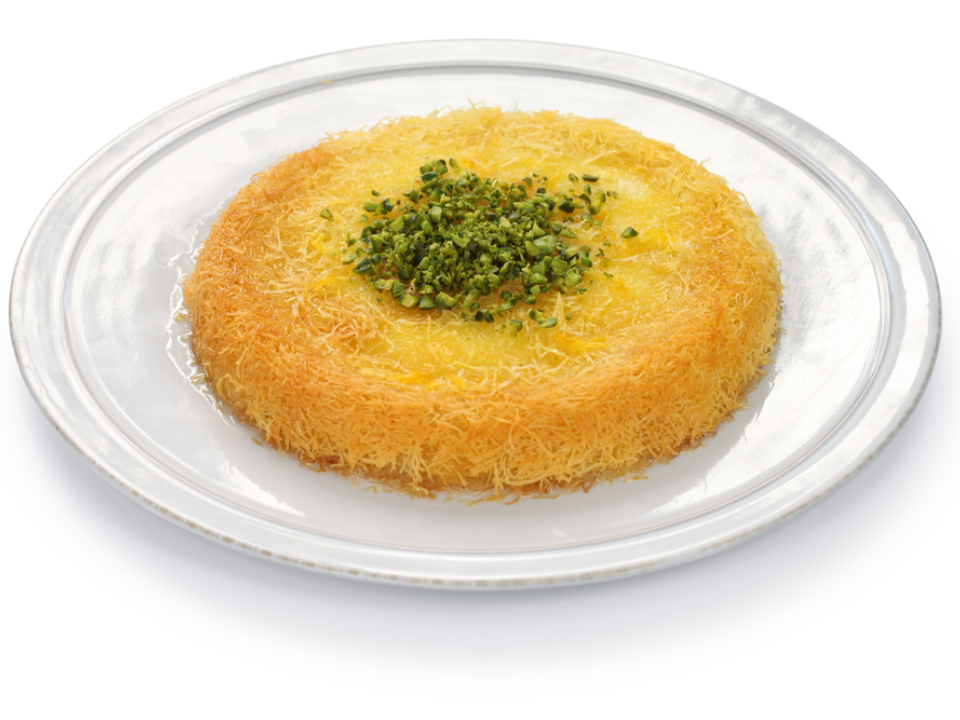
Knafeh is a Middle Eastern dessert that combines stretchy cheese with a crispy semolina or phyllo topping, all soaked in a fragrant sugar syrup. The contrast between the warm cheese and the sweet coating makes it unique and unforgettable. It is often flavored with orange blossom or rose water and served with crushed pistachios on top. The taste is rich, sweet, and lightly floral.
Found in Lebanon and neighboring countries, knafeh is often eaten for breakfast or as a celebratory dish. Street vendors prepare it in wide trays and cut it into squares while it is still warm. Watching it being made adds to the experience. The texture, temperature, and syrup all come together in one satisfying bite that is hard to find outside the region.
Kardinalschnitten (Austria)
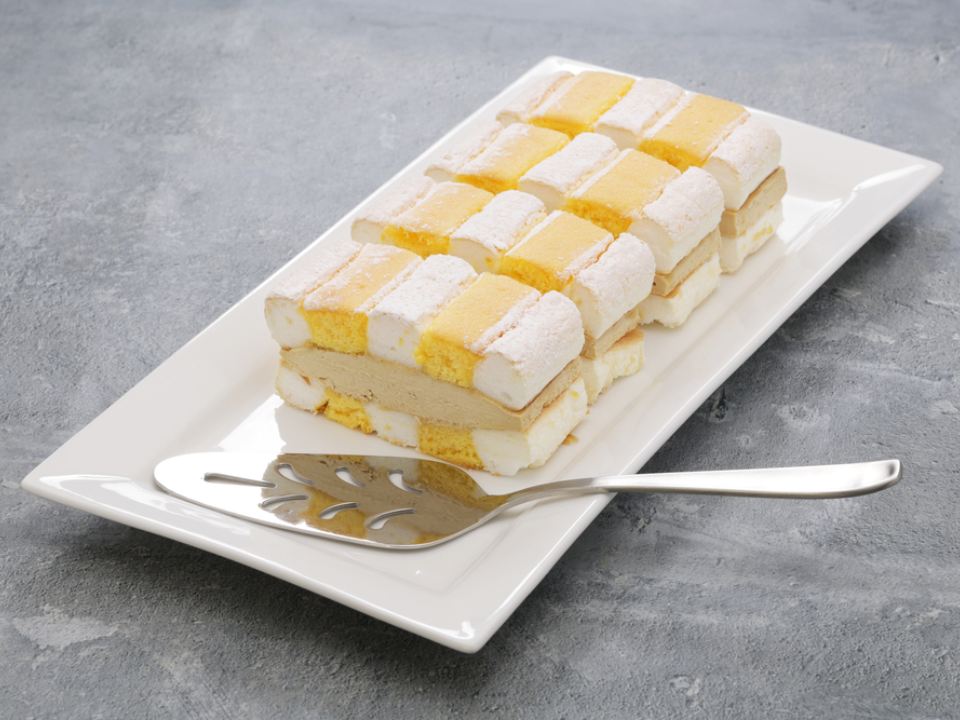
Kardinalschnitten is an elegant Austrian dessert made with layers of meringue, sponge cake, and coffee cream. The dessert has a soft and airy feel with just the right amount of sweetness. The sponge cake and meringue are baked together to create a striped effect. The cream in between adds depth without overwhelming the delicate texture.
It is usually served as a slice in Viennese cafés, often enjoyed with a cup of coffee. This dessert reflects Austria’s rich café culture and love for detailed pastries. While you might find versions in European bakeries elsewhere, they rarely match the quality of those served in Austria. It remains a quiet favorite among those who love light yet flavorful desserts.
Medovik (Russia)
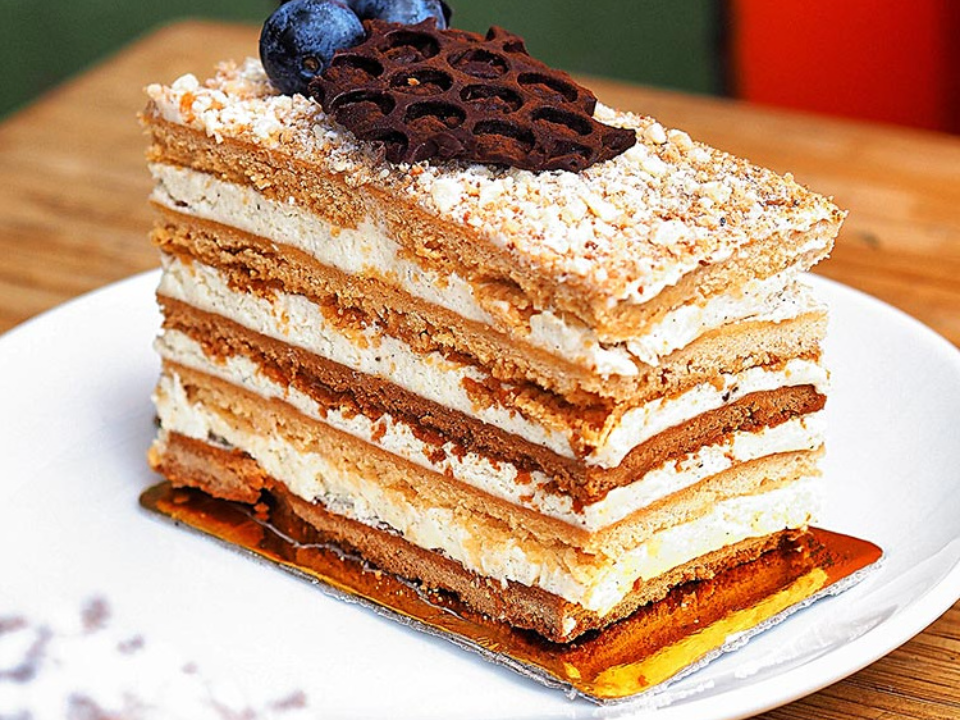
Medovik is a Russian honey cake with thin layers of sponge filled with a creamy sour cream frosting. The layers are built up into a tall, impressive-looking cake with a slight tang from the frosting and a warm sweetness from the honey. Each bite feels rich yet balanced. The cake is often topped with crushed cookie crumbs or cake trimmings.
It takes time and patience to prepare, which is why it is often made for special gatherings and celebrations. Some families have their own versions, with slight variations in the filling or thickness of the layers. Medovik has gained a quiet following abroad, but the best versions still come from Russian kitchens and bakeries. It holds both tradition and comfort in every slice.
Sernik (Poland)
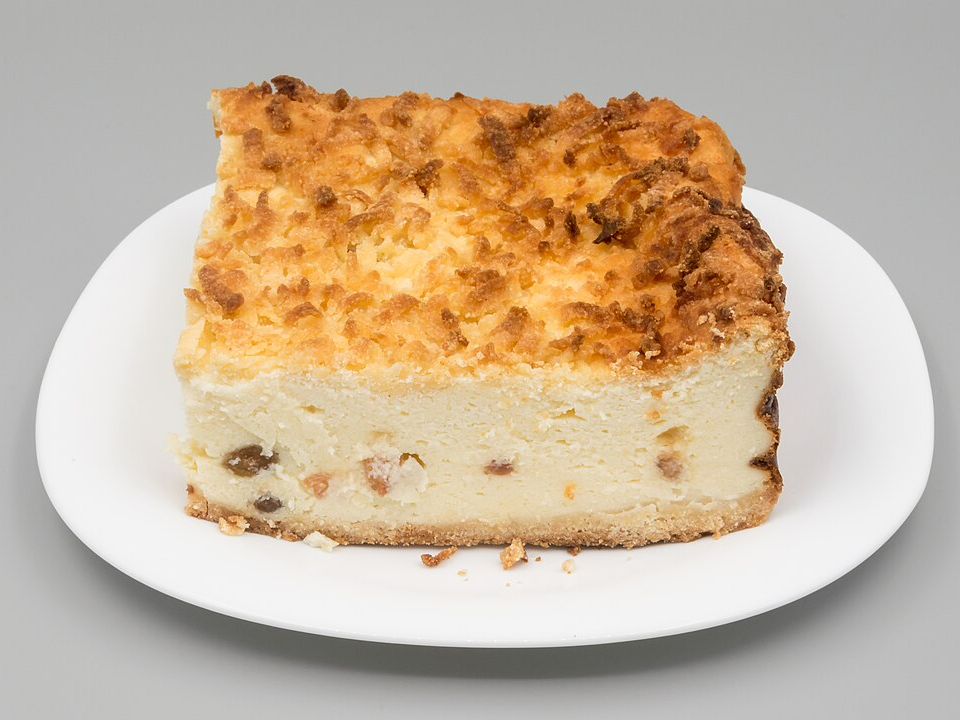
Sernik is a Polish cheesecake that is firmer and less sweet than its American counterpart. Made from twaróg, a type of farmer’s cheese, it has a dense texture and a subtle tang. The top is sometimes adorned with dried fruit or a thin glaze, and the base may or may not include a crust. Each version varies by region and family recipe.
Sernik is often served during holidays, weddings, and Sunday gatherings. Its humble ingredients reflect the Polish approach to dessert, which focuses on flavor rather than decoration. You will find it in bakeries across Poland, and each region has its preferred style. The balance between the cheese and sweetness is what keeps people coming back.
Picarones (Peru)
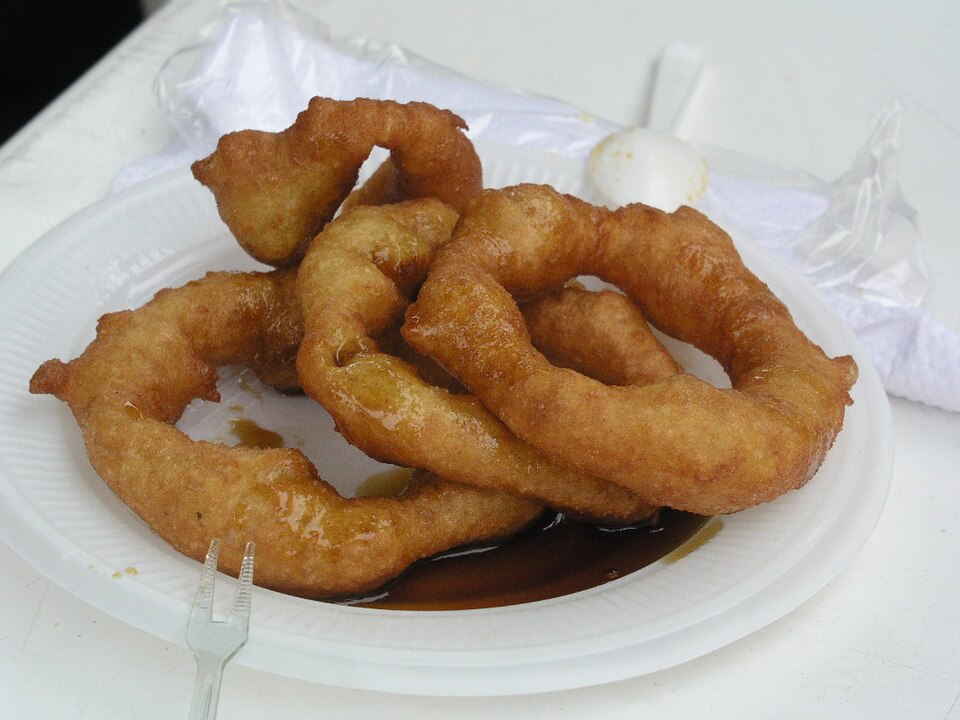
Picarones are deep-fried rings made from squash and sweet potato, served with a sticky syrup made from cane sugar and spices. Though they resemble doughnuts, the flavor is much more complex. The dough is slightly spiced and has an earthy sweetness, while the syrup adds a warm, caramel-like finish. They are best eaten hot and fresh.
Found in markets and on street corners, picarones are a common snack in Lima and other Peruvian cities. Vendors prepare them on the spot and serve them with syrup poured over the top. They are especially popular during festivals and nighttime fairs. While easy to enjoy, they are hard to replicate without the same local ingredients.
Malva Pudding (South Africa)
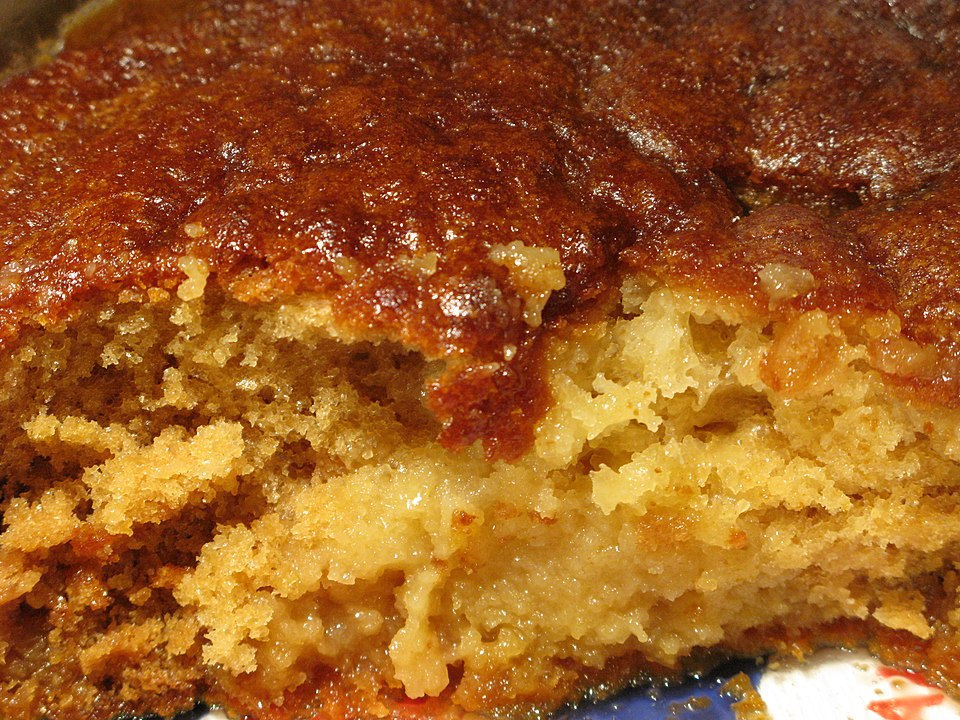
Malva pudding is a warm, baked dessert with a caramelized crust and a soft, sponge-like center. It is made using apricot jam, sugar, eggs, and milk, then soaked in a sweet cream-based sauce after baking. The texture is rich and sticky without feeling heavy, making it a favorite at family dinners and restaurants across South Africa. It is usually served with a scoop of vanilla ice cream or a spoonful of whipped cream.
This dessert has Dutch roots but developed its own character over time in South African kitchens. It is especially common during holidays and special occasions, where it provides both comfort and sweetness. While recipes exist online, the taste and experience are best enjoyed where it was first popularized. Its deep flavor and warm sauce make it one of the most memorable desserts from the region.
Eszterházy Torte (Hungary)
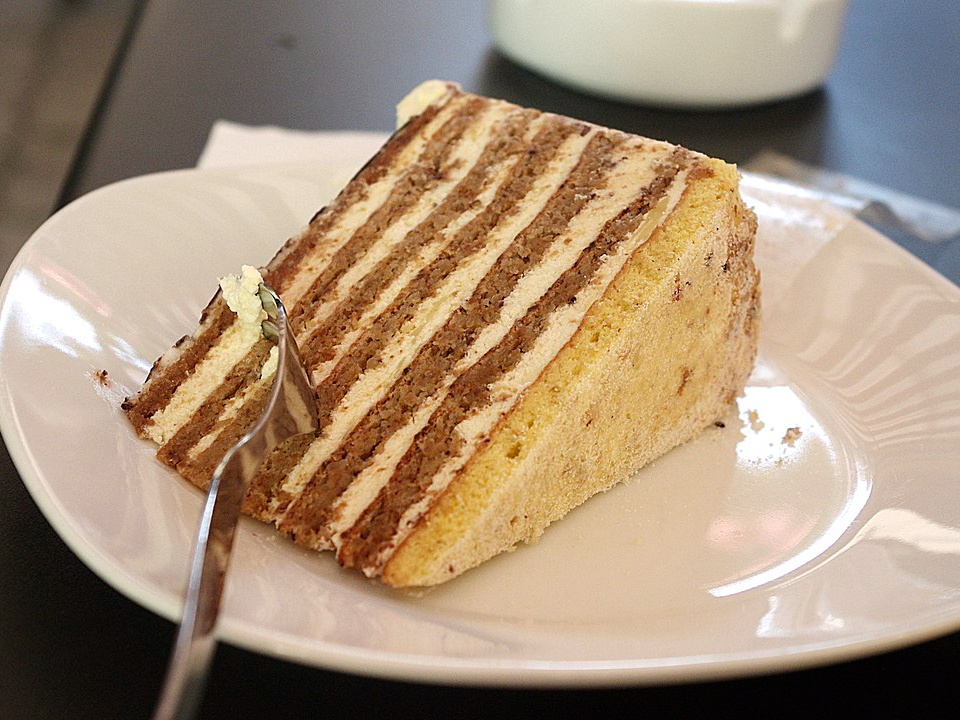
Eszterházy torte is a Hungarian cake made with layers of nutty meringue and buttercream. It is flavored with ground walnuts or hazelnuts and topped with a thin glaze decorated with a signature spiderweb pattern. Each bite offers a mix of crunch and creaminess that is not too sweet but still satisfying. The cake is named after a noble family and has become a classic in Central European pastry culture.
Although you can find it in upscale bakeries across Europe, the most authentic versions are found in Hungary and parts of Austria. It is often served during celebrations or with afternoon coffee. The combination of textures makes it stand out among layered cakes. It remains a symbol of refined dessert-making that reflects the region’s taste for elegance.
Qatayef (Egypt)
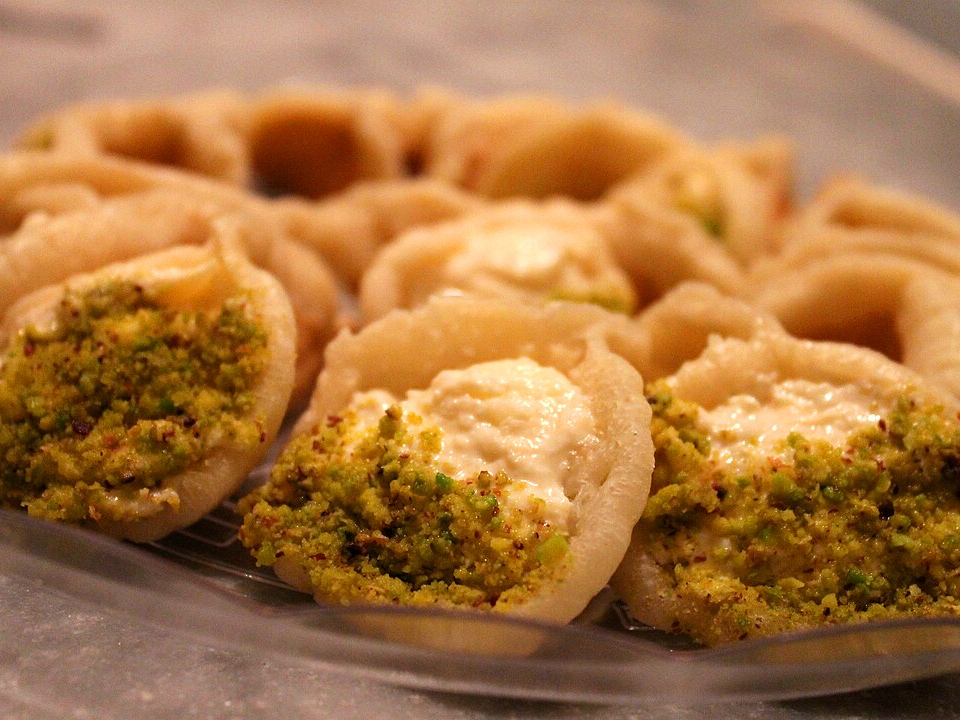
Qatayef is a Middle Eastern dessert that appears mainly during Ramadan. It looks like a small stuffed pancake, often filled with sweet cheese or nuts and then deep-fried or baked. After cooking, it is soaked in syrup and sometimes topped with crushed pistachios. The outer shell is crispy while the filling remains soft and flavorful.
Though popular in several countries, it holds strong ties to Egyptian food culture during festive months. Families often make them at home, but street vendors prepare fresh batches daily during the season. The ingredients may vary slightly by region, but the experience of eating qatayef fresh and warm is what makes it special. Its balance of textures and sweet syrup creates a dessert that is both filling and enjoyable.
Kue Lapis (Indonesia)
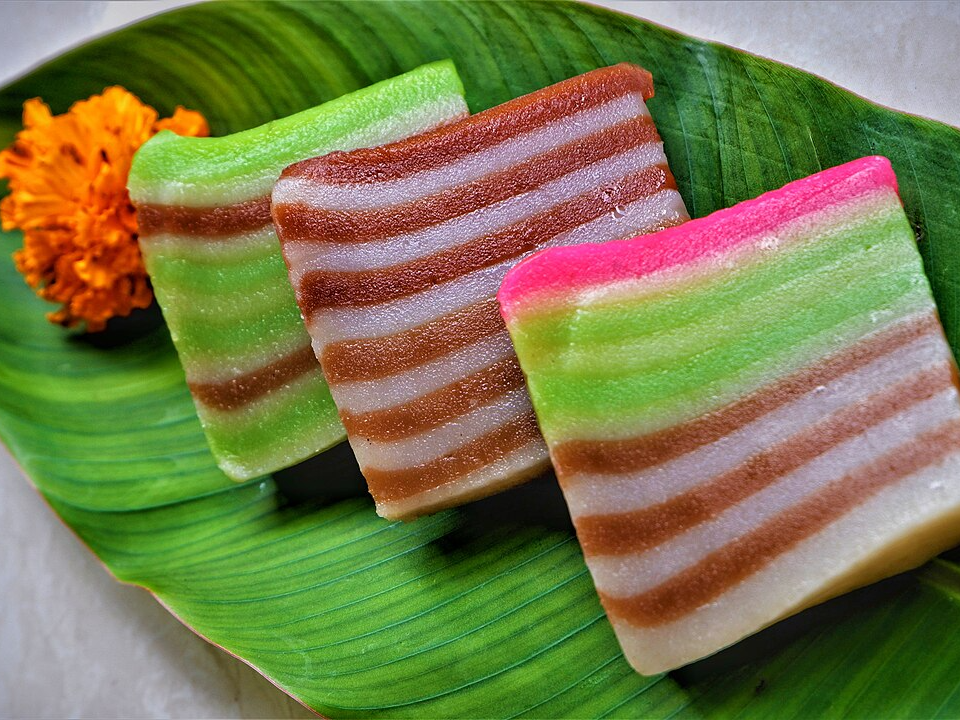
Kue lapis is a layered rice flour cake made with coconut milk, sugar, and natural colorings. Each slice reveals bright, alternating stripes of color, often pink and green or brown and white. The texture is chewy and slightly sticky, making it different from Western-style cakes. Each layer is steamed one at a time, which gives it a smooth, glossy appearance.
This dessert is commonly sold at markets and is a staple during celebrations and holidays. Children are especially fond of peeling off each layer while eating. It reflects the Indonesian love for colorful, coconut-rich sweets. Though it may look simple, the flavor and care in preparation make it worth seeking out.
Obwarzanek Krakowski (Poland)
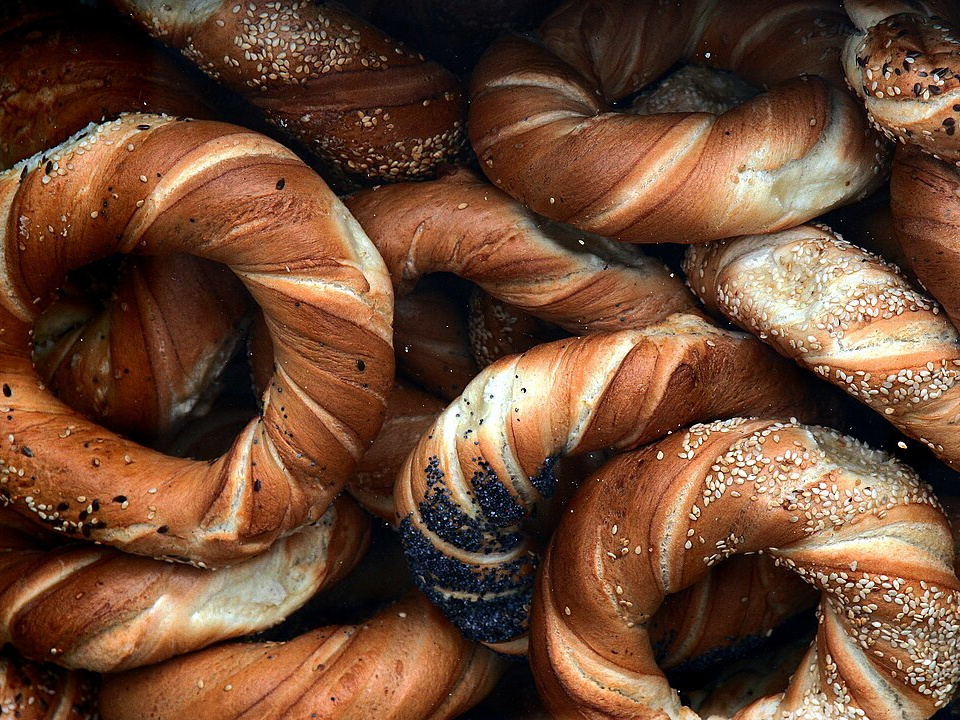
Obwarzanek krakowski is a traditional Polish bread ring that is lightly sweet, chewy, and sprinkled with poppy or sesame seeds. Though closer to a pretzel or bagel in appearance, it has its own distinct taste and history. It is sold from street carts throughout Kraków and is often enjoyed as a quick snack. Each one is hand-formed, boiled, then baked for a golden finish.
While not always considered a dessert, its slightly sweet dough and popularity as a treat earn it a spot on this list. Its roots go back to medieval times and it holds a protected status under European law. Visitors often pick one up while sightseeing, as they are affordable and filling. Its taste is best when fresh, making it a treat that ties closely to the rhythm of local street life.
Kaju Katli (India)
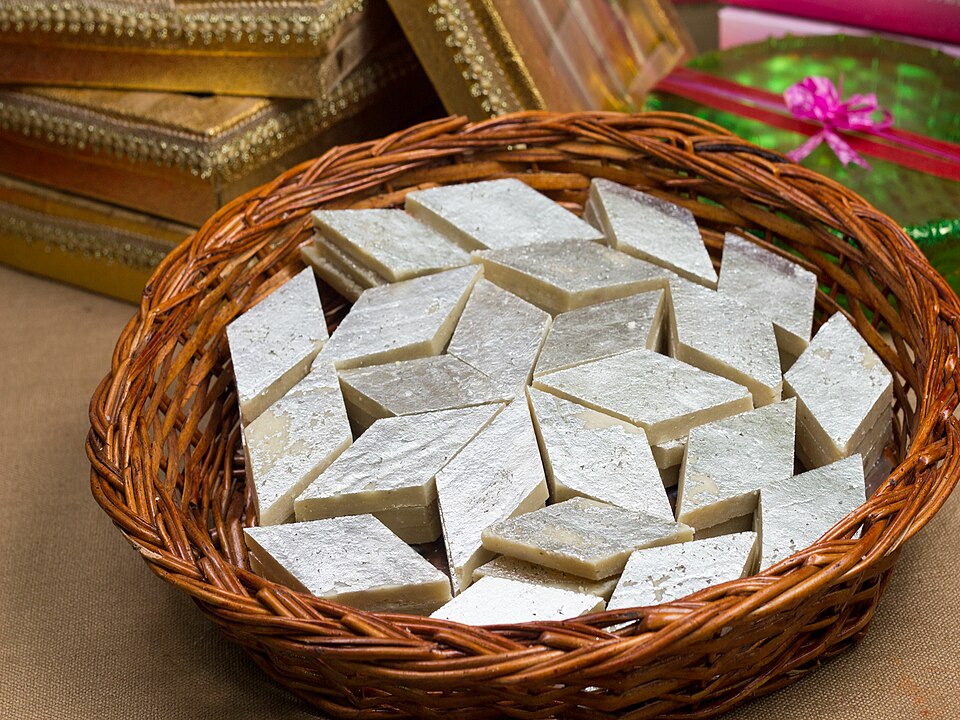
Kaju katli is an Indian sweet made from ground cashews and sugar, often topped with edible silver leaf. The texture is smooth and slightly chewy, and the flavor is nutty with just enough sweetness. It is shaped into thin diamonds and served during festivals like Diwali. Though simple in ingredients, it is considered a premium treat due to the quality of the cashews used.
You will find it in Indian sweet shops across the country, usually in gift boxes or sold by weight. The preparation requires skill, especially in achieving the right texture and shape. While versions may be found in Indian grocery stores abroad, the freshness and texture are rarely the same. It remains a prized sweet that represents celebration and tradition.
Sfenj (Morocco)
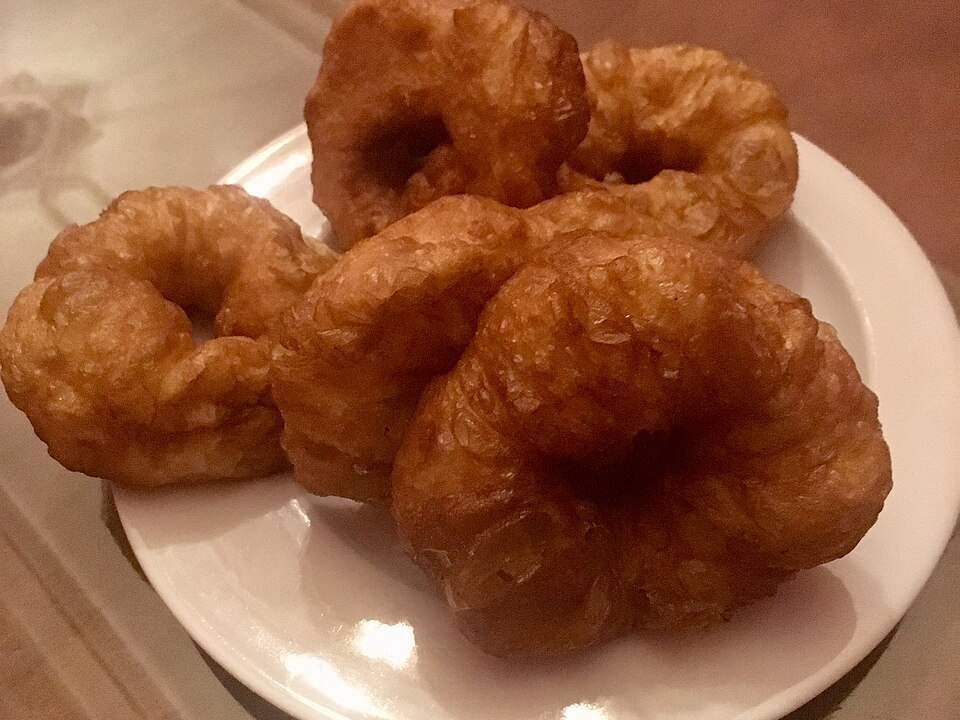
Sfenj is a Moroccan doughnut made without sugar in the dough but dipped in honey or dusted with powdered sugar once fried. Its shape is uneven and rustic, often with a small hole in the center. The inside is airy and chewy, while the outside has a slight crispness. It is usually eaten hot and served with a glass of mint tea.
Street vendors across Moroccan cities fry sfenj fresh in the morning and late afternoon. Locals often enjoy them as a snack or light breakfast. While it might seem simple, the process of shaping and frying the dough takes a practiced hand. Sfenj reflects the warm and inviting nature of Moroccan street food culture.
Snow Skin Mooncake (China)
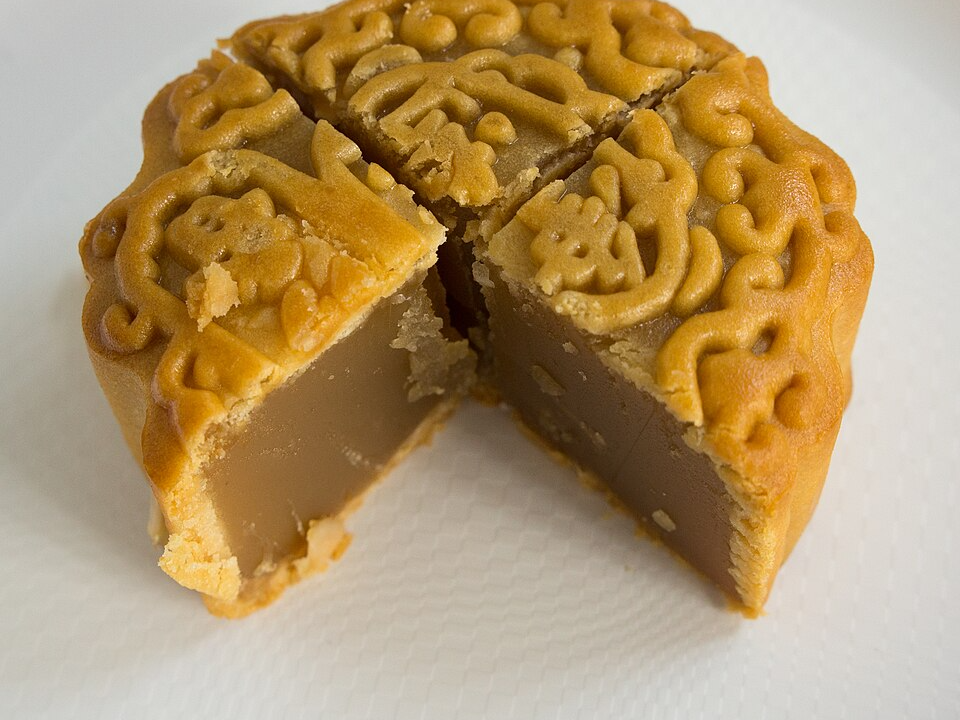
Snow skin mooncake is a chilled dessert typically eaten during the Mid-Autumn Festival in China. Unlike traditional mooncakes with baked crusts, snow skin versions are made from glutinous rice flour and stored cold. They have a soft, chewy texture and are often filled with lotus seed paste, red bean, or custard. Some varieties include fruit flavors or even chocolate for a more modern twist.
These mooncakes are popular in southern China and Hong Kong, where the weather during the festival is warmer. Their refreshing taste makes them a favorite alternative to heavier baked versions. Since they must be kept cold, they are difficult to transport and are rarely exported. Enjoying one fresh from a specialty shop is part of the seasonal tradition.
Cassata Siciliana (Italy)
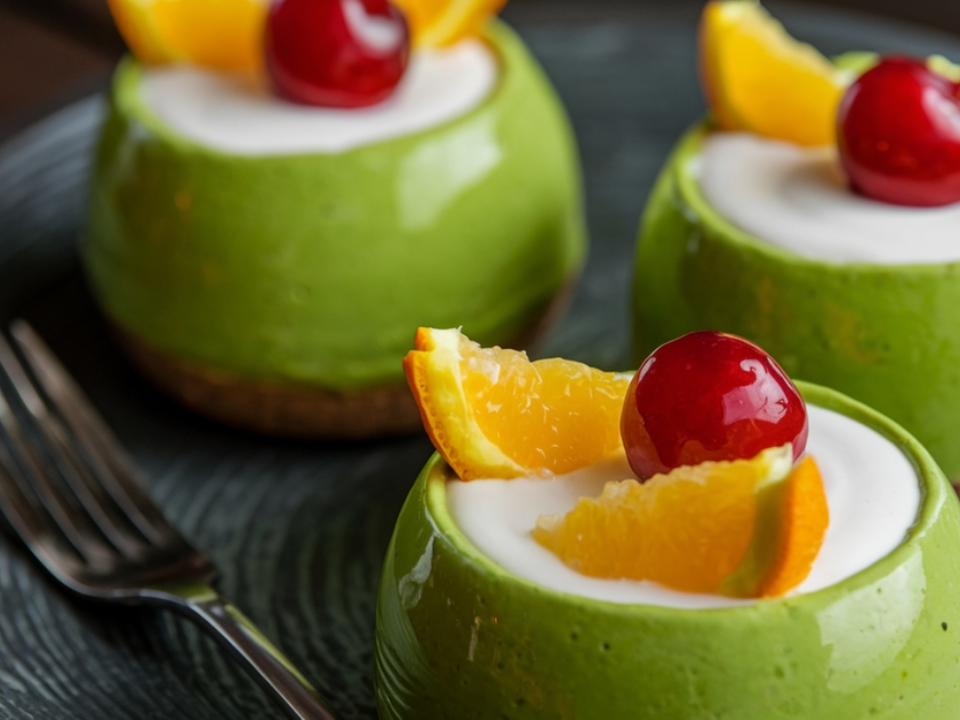
Cassata Siciliana is a traditional Sicilian dessert made with sponge cake, sweetened ricotta cheese, candied fruit, and a thin layer of marzipan. It is typically decorated with colorful pieces of fruit and sometimes topped with icing. The dessert has roots in Arabic and Norman influences, combining Mediterranean ingredients with local flavors. Its taste is rich, sweet, and layered.
This dessert is most commonly prepared around Easter, but some bakeries in Sicily offer it year-round. Each slice reflects the complexity of the region’s culinary history. While some versions exist outside Italy, the original is best enjoyed fresh from a bakery in Palermo or Catania. Its striking appearance and sweet flavor make it a memorable part of Sicilian cuisine.
This article originally appeared on Avocadu.
